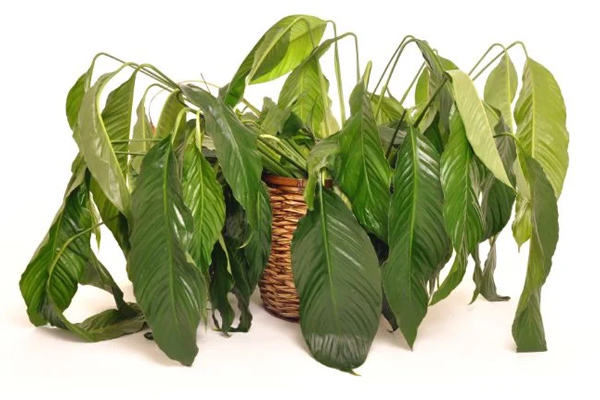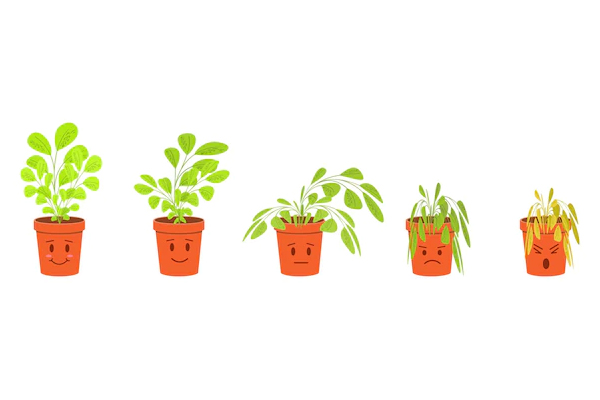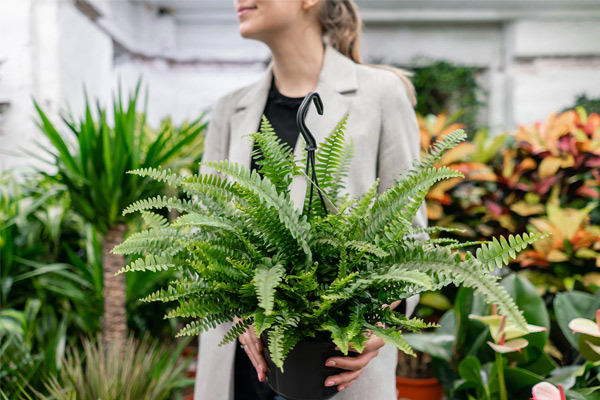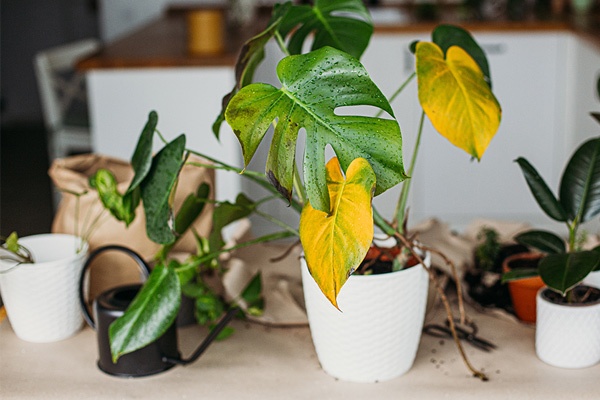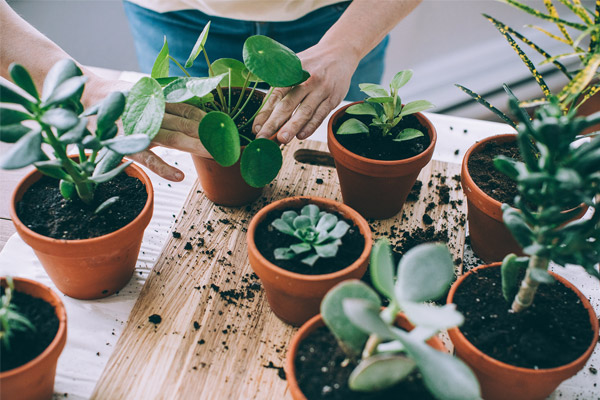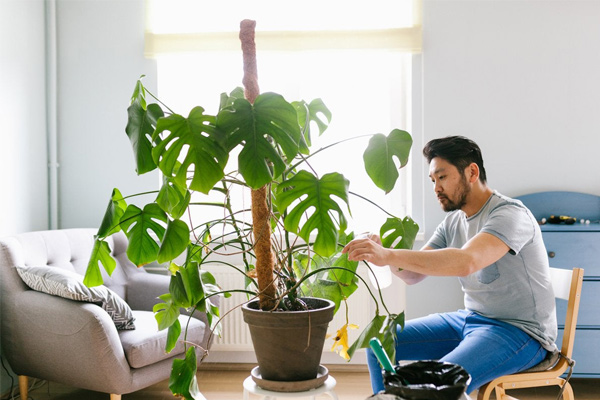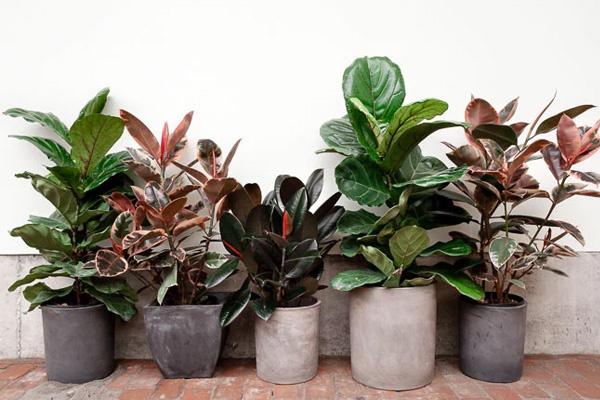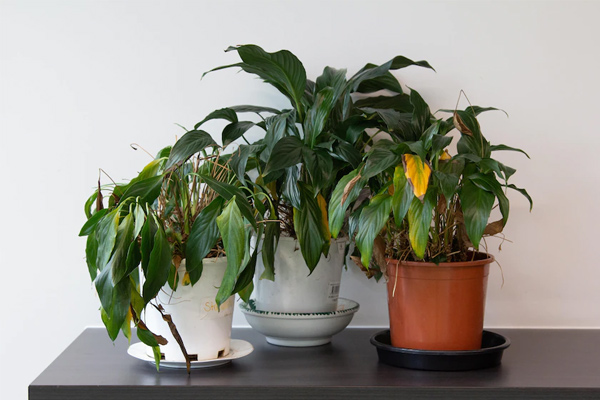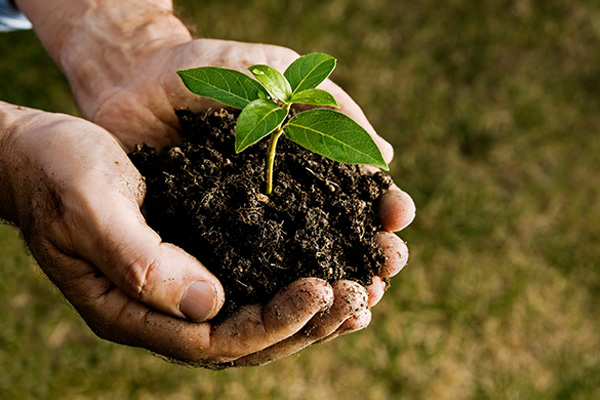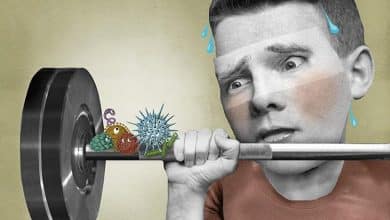The cause of wilting and drying of indoor plants and their solution
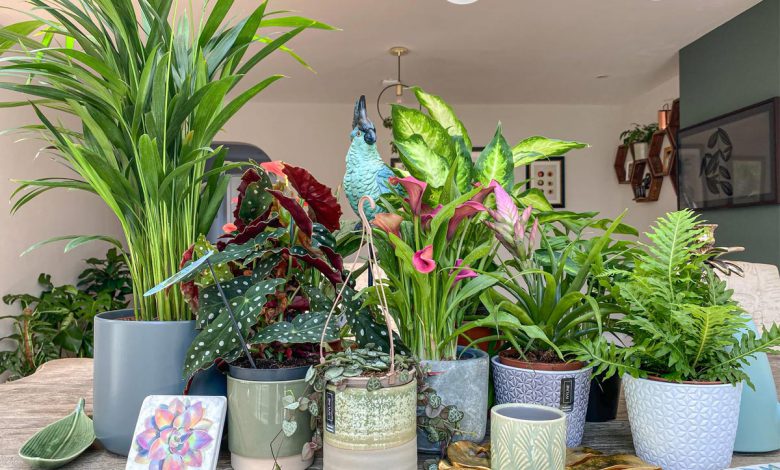
Houseplants are one of the main components of home beauty. Whether inside or outside the house, having a plant has a great effect on the freshness of the environment. Many people have trouble taking care of houseplants. In this article from orshid, the reasons for wilting and Drying houseplants We will check and then go to their solution.
Reasons for withering and drying of indoor plants
Drying houseplants It can have various reasons. Timely irrigation, proper light and quality soil are the most effective factors. In the following, we will examine each of the causes along with their addresses.
The main causes of drying houseplants
withering and Drying houseplants It is often caused by dehydration. The plant needs a strong root for growth and activity, a root that is proportional to the size of the plant. The plant receives minerals and water from the roots. Water reaches the leaves through the stem from the roots. The leaf takes whatever amount it needs and evaporates the rest. If the water reaching the leaves is not enough, the leaves and flowers of the plant will dry. So, the reason for wilting and drying of indoor plants can be a problem in receiving and transferring water.
dehydration
If the plant does not get enough water, first the soil and then the leaves of the plant will dry. In fact, the water flowing in the plant system is used or evaporated, but new water does not replace it. For this reason, the plant gradually withers and shrivels. So, if you see that the leaves are gathered, they are not fresh, and the soil in the pot is dry, then the reason for the withering of your plant is lack of water. If the amount of dehydration is high, the tips of the leaves will turn brown.
To solve it, you need to water the plant regularly. If the amount of dehydration is not more than the tolerance of the plant, there is a possibility that it will survive. Some plants are very hardy and some will die forever with a little dehydration. Note that the plant needs regular watering and do not overdo it to compensate for its lack of water.
Excessive watering
If you give the plant more water than it needs, it will turn yellow and rot. Excessive watering makes the soil always wet and there is no space for air to pass. For this reason, bacteria and microbes around the root increase and cause the root to die. The death of the root eventually destroys the whole plant.
This may happen due to excessive watering or lack of proper drainage for the pot. If the soil surface of your pot is always wet or the bottom of the pot is always full of water, then the plant may soon suffer from root rot.
The solution to prevent root rot and drying of indoor plants
To prevent this from happening, water the plant less. If your plant has this problem, to solve it, take the plant out of the pot, remove the rotten and softened roots, prepare new soil, make sure the drainage of the pot and finally plant the plant with new soil. It is possible that the plant will come back to life, but if the decay is too much, it will not be healthy.
temperature changes
If the plant is placed at an inappropriate temperature, it may wither. This inappropriate temperature is too hot or too cold. For tropical plants, the ideal temperature is between 15 and 23 degrees Celsius, and outside of this temperature is unbearable for the plant. Excessive temperature causes excessive evaporation of water in the plant system.
To prevent this from happening, do not place the plant near heating devices or near door and window seams in the summer season. Also, if you live in hot areas, it might be better not to put the plant in front of the window. The plant may grow well and be healthy in front of the window in winter, but it needs to be moved in summer.
Be careful that a plant that is tropical and needs a higher average temperature also needs more watering. If you notice signs of yellowing of leaves, burning of the edges of the leaves, excessive leaf shedding or curling of the leaves, it is probably due to excessive heat. To solve it, just move the plant to a cooler place and water it regularly.
If the ambient temperature is colder than the required temperature of the plant, it will cause frostbite and eventually dry your houseplants. Excessive cold causes damage to the roots and stems, and the leaves cannot receive nutrients and water. To prevent this from happening in the cold season, do not place the plant near the door or window. Also, if you keep it outside the house in the summer season, keep the plant inside the house and at a moderate temperature with the beginning of autumn.
Plant disease
Disease is another cause of wilting Drying houseplants Is. The disease causes damage to the plant’s roots and disrupts the flow of water and nutrients in the plant. Lack of air conditioning, excessive watering and improper plant maintenance can be the cause of plants. One of these types of diseases is fusarium, which turns the leaves of the plant black and completely withers within a day. If you notice a disease in your plant, quickly move it to an environment separate from other plants so that the disease does not spread to them. To prevent this from happening, check the following:
- Proper drainage
- Sufficient watering and not too much
- A pot of the right size
Failure to comply with any of these factors will cause pests and microbes to appear in the pot and the disease will damage the entire plant.
pest
Pests, like disease, can gradually destroy the plant system. If you notice its existence in time, you can save the plant by following the necessary principles. Pests stick to the plant, suck its sap, and nutrients do not remain to reach the plant. Mites, aphids and insects are usually the cause of pests. To prevent this from happening, check the plant every month so that you can save the plant if there are not many insects. A type of pesticide is suitable for each type of pest. In this context, you can consult a flower and plant expert to introduce you to the right pesticide.
low humidity
Most plants need a lot of humidity, and the usual humidity at home is not enough for them. Especially, some mosses or orchids need high humidity and will wither if it is not enough. Usually in rooms that get a lot of light, humidity is low. Also, in winter, when the house is often closed and the heating devices are on, there is little humidity in the house. In this condition, the plant may remain healthy, but it does not have the desired freshness and greenness.
To solve this problem, you can use a humidifier by supplying moisture near the plant. You can also pour some water in the vase and put a stone under the vase. So that the bottom of the pot is not in contact with water, otherwise the root will rot. At home, places like the bathroom and kitchen have more humidity than other places.
Fertilization
Excessive fertilization can also cause Withering and drying of houseplants to be You may have used too much fertilizer based on the false belief that the more fertilizer you give to the plant, the more it will grow and flourish. While the plant is damaged and poisoned if it receives too much fertilizer, usually less fertilization than required does not cause the plant to wither.
To solve it, pour water on the soil for about 5 minutes and wash the soil. Allow the excess water to drain completely and slowly from the bottom of the pot. By doing this, the salts formed as a result of excessive fertilization are washed away and removed from under the pot. As a result, your plant will become lively and lush again.
Neglecting the plant
The plant needs attention to maintain and stay fresh. If you take care of the plant for a while, give it plenty of water, provide it with high-quality fertilizer and have enough moisture, but if you ignore it for a while, the plant will not survive in the end. For this reason, you must check it every week or every month, depending on the type of plant, and if necessary, apply pesticides or fertilizers, or move it to a bigger pot.
Of course, there are exceptions. Some plants, especially cacti, survive for a long time in conditions of lack of water and lack of fertilizer.
Improper watering
Improper watering does not only mean lack of water or overwatering. The water you give the plant should be at room temperature. Too much cold or too hot water damages the plant tissue.
Also, when watering, use a sprinkler and pour water in all parts of the pot. If you don’t have a sprinkler, try to water every inch of the soil in the pot and don’t water in just one spot. You can also fill a bowl with water and place the pot in it. If the pot has proper drainage, it will slowly draw the amount of water it needs. Don’t forget to empty the bowl if there is water left in the bowl after an hour.
Insufficient light
Most plants need direct or indirect light. There are almost no houseplants that can survive without light. Cacti and succulents need a lot of direct light, so it is better to keep them outdoors. If you keep them at home, it is better to place them in front of the south or west window.
If your plant is not a cactus but needs a lot of light, then it should be placed behind a window to get enough light with a filter. The following are signs of lack of light in the plant:
- Thinning of the plant
- loosening of the plant
- Paleness of the plant
- leaf fall
- Weak growth of new leaves
- Paleness of fresh leaves
To prevent houseplants from drying out and this light problem, consider the environment where you want to place the pot and be sure to include it when buying. Draw the curtains during the day. The south, then west and east windows provide the best light for the plant. Do not move the plants too much so that the leaves lean towards the light.
Following are the signs Drying houseplants We examine them in the form of headlines, along with their causes and solutions:
- Yellowing of leaves
- Changing the shape of the leaves
Cause: presence of pest or lack of minerals
Solution: After you are sure of the absence of pests, apply fertilizer containing calcium and boron minerals to the plant.
- Fading green leaves
- Yellowing of leaves
Cause: This condition occurs in plants due to excessive moisture in the soil or the presence of fungus gnats. If a long time has passed since this problem occurred, the stem of the plant will gradually turn black and the lower leaves will start to fall.
Solution: move the plant to a bigger pot and water it less. When the soil surface is dry, it is the right time to water the plant. Because this usually happens due to rotting of the roots.
- Yellowing of leaves
- Twisting the leaves inwards
- Wilting of the plant
Cause: dry plant soil and low watering are the causes of these symptoms.
Solution: Water the plant more and at shorter intervals.
- Complete yellowing of the plant
- Falling or not falling leaves
Cause: Improper temperature is the cause of these symptoms. Being too cold, too hot or too much changes in temperature will cause the plant to completely turn yellow and eventually dry up houseplants. In this condition, the yellowness of the leaves is very faint or sometimes turns white.
Solution: Fertilize the plant and place it in a more moderate temperature.
- Half yellowing of the whole plant
- No falling leaves
Cause: The reason is either the pot is small, which makes the root not have enough space to grow, or the plant does not have enough minerals.
Solution: Move the plant to a bigger pot and fertilize more regularly.
Can a dying plant be revived?
Each plant has different capacity and resistance according to the category in which it is placed. Some plants cannot be revived as soon as signs of drying appear. But their more resistant types, especially cacti, can survive well in harsh conditions and come back to life by correcting their problem.
In addition to plant resistance, the next determining factor is the severity of the problem. If a long time has passed since the occurrence of any of the problems, from lack of water and root rot to the presence of pests and diseases, there is no possibility of reviving the plant. For this reason, it is recommended to check your houseplants at regular intervals to prevent such conditions from occurring, and as soon as you see signs of unhealthy growth and not being fresh in the plant, take action to fix it.
General points
The plant has certain signs to show us its problems. To prevent occurrence Withering and drying of houseplants It is necessary to check it regularly. Then, by correctly diagnosing the problem, try to fix it.
Keep in mind that for the health of the plant, don’t overdo it in watering, fertilizing or other mentioned things. In general, each plant has its own special conditions for better maintenance according to the conditions of the place where it is located. Experience helps a lot to follow all the necessary things gradually. So, by trying different things, you can find the secrets of plant care and provide yourself with a green and fresh environment at home.
last word
In this snap market article, all the tips to solve wilting and Drying houseplants We checked that there was. A step-by-step guide to the problems related to unhealthy plant growth along with their solutions. If you have your own technique to have a lively and green flower pot, write to us.

